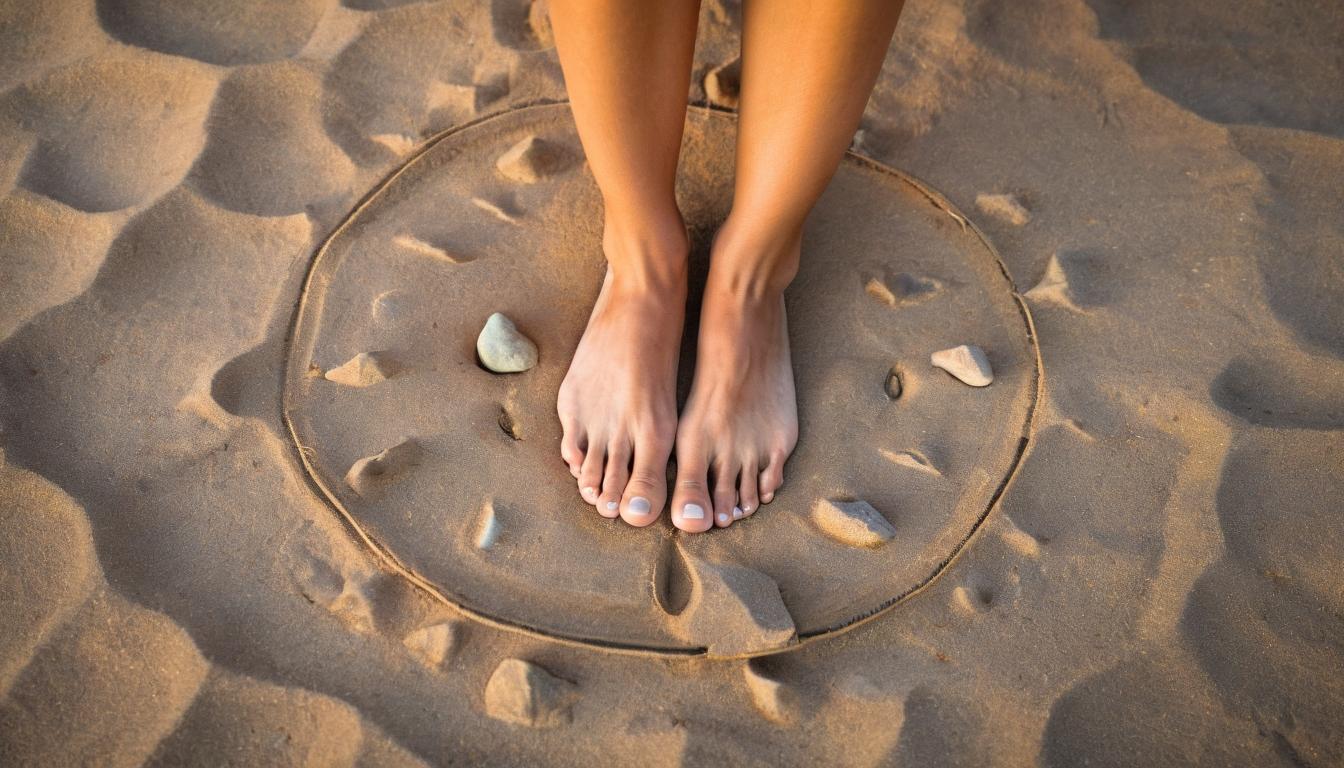The hum of servers, the glow of screens, the constant ping of notifications—this is the soundtrack of modern life. While technology connects us across continents, it simultaneously disconnects us from something fundamental: the earth beneath our feet. Grounding, or earthing, isn't just another wellness trend; it's a practice rooted in ancient wisdom that science is only beginning to understand.
Walking barefoot on grass, soil, or sand might seem simplistic, even primitive. Yet this simple act creates an electrical reconnection between the human body and the earth's natural electric charge. The earth carries a subtle negative charge, and when we make direct contact, we absorb electrons that neutralize free radicals—those unstable molecules linked to inflammation and aging. Research published in the Journal of Environmental and Public Health suggests this electron transfer can reduce pain, improve sleep, and decrease stress markers.
Modern living has effectively insulated us from this natural electrical exchange. Rubber-soled shoes, elevated floors, and urban environments create barriers between us and the earth's healing current. We've become electrical islands adrift in a sea of electromagnetic pollution from Wi-Fi, cell towers, and electronic devices. The consequences manifest as chronic inflammation, poor sleep quality, and that persistent feeling of being 'wired but tired.'
Traditional cultures understood this connection intuitively. Indigenous practices across continents emphasized barefoot contact with the earth for spiritual and physical wellbeing. Ayurvedic medicine recommends walking on grass in the morning dew to balance the body's energies. Chinese medicine speaks of absorbing qi from the earth through the Yongquan (Bubbling Spring) points on the soles of the feet. These ancient systems recognized what modern science now confirms: we are electrical beings living on an electrical planet.
The practice doesn't require elaborate rituals or expensive equipment. Thirty minutes of barefoot contact daily can initiate measurable changes. Morning dew on grass provides particularly potent grounding due to increased conductivity. Beach sand offers excellent contact, while natural stone surfaces like granite or marble also facilitate electron transfer. Even gardening with bare hands in soil creates a partial grounding effect.
For urban dwellers or those with mobility issues, grounding products offer an alternative. Grounding mats, sheets, and patches connect to the ground port of electrical outlets, creating a similar electron transfer. While not identical to direct earth contact, studies show they can produce comparable benefits for sleep quality and pain reduction. The key is consistency—making grounding part of your daily routine rather than an occasional novelty.
Beyond physical benefits, grounding cultivates mindfulness. The sensation of grass between toes or sand shifting underfoot anchors us in the present moment. This tactile connection interrupts the mental chatter that characterizes modern consciousness. Many practitioners report feeling 'more solid' in their bodies and decisions after regular grounding sessions. The practice becomes a moving meditation that recalibrates both body and mind.
Scientific skepticism remains, of course. Critics argue that many studies are small or lack rigorous controls. Yet the anecdotal evidence is compelling, and the biological mechanism—electron transfer—is well-established physics. As one researcher told me, 'We're not talking about magic here. We're talking about basic electrical principles that we've ignored because they seemed too simple.'
The beauty of grounding lies in its accessibility. Unlike many wellness practices that require special training or significant financial investment, reconnecting with the earth costs nothing. It's available to anyone with access to a patch of ground. In our quest for complex solutions to modern ailments, we might have overlooked the most elementary medicine: the earth itself.
As environmental concerns grow, grounding offers another benefit—it reminds us of our fundamental connection to the planet. When you feel the earth's energy flowing into your body, abstract concepts like 'environmental stewardship' become visceral experiences. You're not just on the earth; you're of the earth. This embodied awareness might be the practice's most profound gift in an age of ecological crisis.
Start small. Tomorrow morning, instead of reaching for your phone, step outside barefoot. Stand still for five minutes. Notice the temperature, the texture, the subtle vibration. You're not just standing on ground—you're plugging into a planetary circuit that has nurtured life for millennia. In reconnecting with the earth, we might just rediscover something essential about ourselves.
The ancient art of grounding: reconnecting with earth's energy in a digital world

